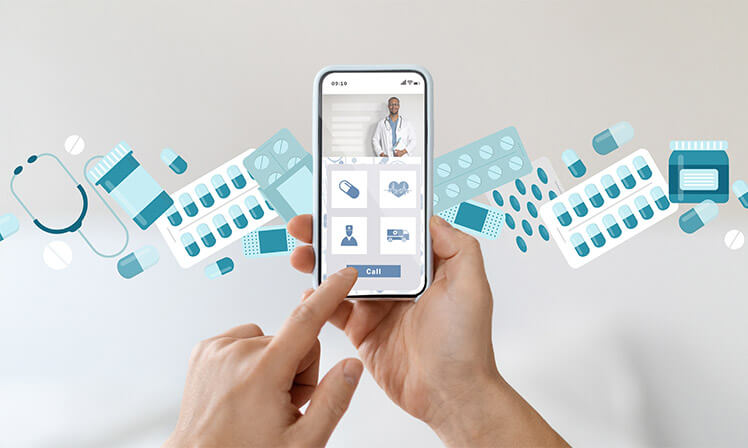Good accessibility is essential for healthcare institutions, especially given the changes in the patient market since COVID-19. For many patients, the first moment of contact, whether by phone, email or online, determines their experience with a healthcare institution. Research shows that more than 75% of patients see quick and easy access to care as a top priority. This underlines the importance for healthcare institutions to maintain their accessibility and communication systems.
While many healthcare institutions are committed to optimizing their accessibility themselves, it can be valuable to consider new insights and approaches. Knowledge exchange can contribute to finding solutions to recurring challenges. Below, we discuss the five biggest challenges in the field of accessibility in the healthcare sector in 2024, along with possible solutions.
1. Absorbing unforeseen absences of employees
Illness, leave or burnout can lead to a reduction in accessibility, which can result in longer waiting times and reduced patient satisfaction. This is especially problematic in healthcare facilities where timely response is of great importance.
Possible solutions:
- Training employees for multiple tasks, so that they can be deployed flexibly.
- The use of part-time or on-call workers to help out during peak times.
- Working with an external partner for accessibility to ensure flexibility and continuity.
2. Training and onboarding of staff responsible for patient contact
Staff who speak to patients must not only provide excellent service, but also understand medical knowledge and protocols. This makes training and onboarding time-consuming and requires specific expertise.
Possible solutions:
- Develop structured training programs for continuous education.
- Use e-learning tools to train employees flexibly and efficiently.
- Engage specialized partners who can provide experienced employees who can be deployed from day one.
3. Ensure high patient satisfaction
A quick and expert response at every touchpoint is crucial for patient satisfaction. This can be a challenge, especially when the demand for care increases and the number of contact moments increases.
Possible solutions:
- Continuously collect and analyze patient feedback to improve services.
- Investing in employee training with a focus on customer focus and communication skills.
- Collaborate with external experts to optimize the quality of accessibility and communication.
4. Dealing with high volumes during peak periods
During peak periods, such as during flu season or health crises, healthcare facilities can be inundated with questions and requests, leading to longer wait times and potentially frustration for patients.
Possible solutions:
- Leveraging advanced technologies for efficient call routing and queuing.
- Deploy additional or temporary staff to manage the increased workload.
- Collaborate with flexible partners who can scale up during peak periods.
5. Using data to improve accessibility and patient satisfaction
Data plays an important role in improving accessibility and patient satisfaction. However, many healthcare facilities struggle to manage and analyze data effectively.
Possible solutions:
- Use analytics tools that automatically measure performance and provide insights on reachability.
- Training employees in interpreting and leveraging data to implement targeted improvements.
- Partnering with a specialized partner that provides data-driven insights to optimize the patient experience.
The challenges surrounding the accessibility of healthcare institutions are considerable, but with the right approach, they can be overcome. Sharing knowledge and experiences helps healthcare institutions to understand these obstacles and implement more effective solutions.
At Movements Marketing, we understand how important it is to keep the accessibility of healthcare institutions optimal. With our experience in supporting various healthcare institutions and laboratories in the Netherlands, we are happy to share our knowledge and insights to find solutions to these challenges together with you. We are always open to a no-obligation conversation to exchange experiences and think along about specific issues within your organization. A fresh look can sometimes reveal new possibilities.







